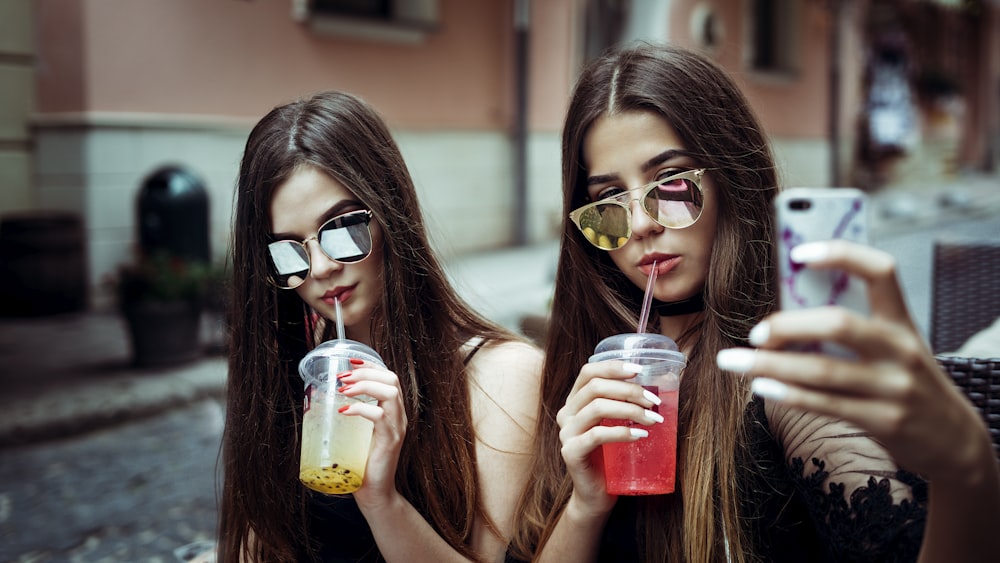Big name brands and beauty startups alike have been harnessing technology to create new innovations for customers. Technology has been a main driver for transforming the whole beauty industry from product development and manufacturing to customer experience and marketing.
According to Euromonitor, the cosmetics and personal care industry in Southeast Asia was valued at $14.9 billion in 2016, with Thailand, Indonesia and Singapore being the largest markets. Thailand is the largest with a value of $4.1 billion, with Indonesia growing at 17% per annum at $3.6 billion.
What is beauty technology?
From China-based selfie app Meitu’s Counter feature that allows users to test makeup on virtually, to portable skin analyzing devices like Samsung’s Lumini, technology has improved the user experience and engagement for beauty fans and customers.

Smart devices that analyse and diagnose skin and hair problems, personalised beauty products, and new lab technologies are enhancing the way products are marketed and sold. According to a Euromonitor report, in Asia Pacific the sales of electric beauty devices have grown by nearly 11,000% in volume between 2010 and 2015.
Beauty technology is apparent in all stages of the product life cycle. Technology helps with product innovation and development, and uses data analysis to create personalised and consumer-driven products. It also improves the online shopping experience with direct marketing and the in-store retail experience of trying on makeup, which in turn leads to more sales. For example, Amorepacific in Korea has recorded an average sales growth of around 50% in the past three years, with the introduction of beauty tech like their “Bio Labs” for skin consultations and “Beauty Mirrors” to virtually try-on makeup in their stores.
As Chief Retail Officer of L’Oreal Marc-Alexandre Risch explains, “The purchase is not the end-game. It’s about the engagement with brands, it’s about the lifetime value of your customers.”
What can we expect from the industry?
In product development, smart products, customised skincare and crowd-sourced products are driving new sales. Singapore-based beauty startup Skin Inc has won more than 100 beauty awards with their Optimizer skincare device and custom blend serum. The brand is investing heavily in technology, including their self-diagnostic quiz to evaluate skin type and come up with a signature serum using patented encapsulation technology from Japan.
Likewise in manufacturing, biotechnology is playing a big part in bio-engineered beauty ingredients made in the lab. Singapore-based Austrianova is one such biotech lab, which provides encapsulation technology that allows cells to be stored in a porous membrane, not only protecting them, but allowing them to be stored much longer. Technology like their Bac-in-a-Box can be used for cosmetic products such as soaps to balance the pH level on the skin environment.
Another beauty trend that continues to grow is the use of crowd-led feedback to drive product innovation. Platforms like South Korean Althea curates several K-beauty brands under one umbrella like Innisfree, Etude House and Missha, while relying on consumer feedback, beauty ambassadors and reviews to promote their site. Taking it a step further, they have also created their own in-house Althea beauty label, based on utilising customer data and insight for small-batch production.
Beauty and wellness services have also uncoupled from the traditional salons and moved towards an on-demand model. For example, #GoWabiatwork from Thailand’s #1 beauty and wellness platform GoWabi brings massages and other services to offices in Thailand and have worked with clients like Sephora, Foodpanda and Lazada.

Is there space for both beauty startups and incumbents?
Despite the rise of beauty technology trends in the past few years, big beauty brands like L’Oreal and P&G are facing increasing competition from beauty startups, especially in the Asia region. In fact in 2016, US cosmetics company Revlon and L’Oréal cosmetics brand Garnier exited the $22.8 billion USD Chinese beauty market, citing the inability to compete with smaller, more agile local companies who offered more sophisticated products at lower prices.
Big beauty brands have recently been acquiring or incubating startups as they have not been able to keep up with them. For example, Nivea has launched a beauty accelerator programme for K-beauty startups to have access to Nivea’s global market reach and expertise. L’Oreal’s Innovation Runway was also set up in Singapore to partner with startups and small enterprises in Asia Pacific in the areas of performance materials and products, personalised beauty experiences and sustainable innovations.
Furthermore, beauty startups are now able to build a strong direct-to-consumer model through the use of online platforms and websites to grow their customer base. Bypassing the traditional retail store, D2C brands are able to cut out the middleman, lower prices and create more products specifically targeted at their niche customer base. Sephora even acquired Singapore-based Luxola.com in 2015 to help penetrate the online beauty market in Southeast Asia.
Startup brands are also strategically placed to quickly and easily incorporate customer and crowd-led feedback to create beauty products that customers actually want. Althea’s in-house beauty label and Skin Inc are great examples of this.
In addition, startups are able to use new ways to reach out to online customers, through the use of influencer marketing, beauty ambassadors, sales reps and social selling. This can help them find new customers, while building online engagement for their brands, some of which were not available before.
Barriers for getting funding for research and development for new products are also lowered with the rise of crowdsourcing platforms like Indiegogo and Kickstarter, allowing beauty startups to innovate and bring products to market faster. Korea tech startup WAY, for example, used Indiegogo to fundraise its portable skin analyser in 2015.
Despite the challenges, the receptiveness towards new tech-enabled beauty products seems to be high. Singapore-based brand IOMA, which produces a moisturiser with a hydration sensor built into its cap spends over $23 million on R&D alone and ships 2,100 skin-diagnosis devices across the globe. Keeping up with this demand, both beauty startups and incumbents will have to continue using technology to innovate and create more beauty tech products for their customers.
